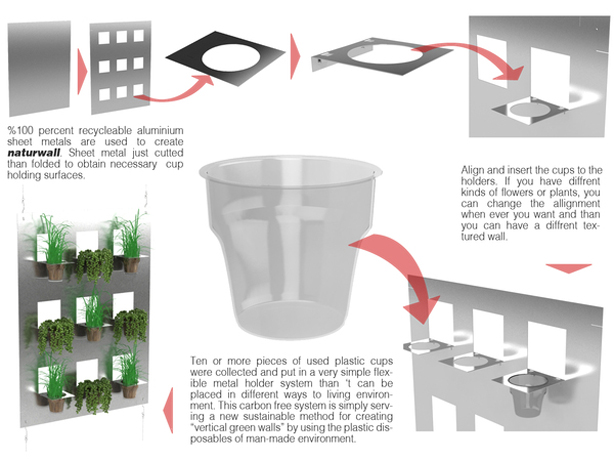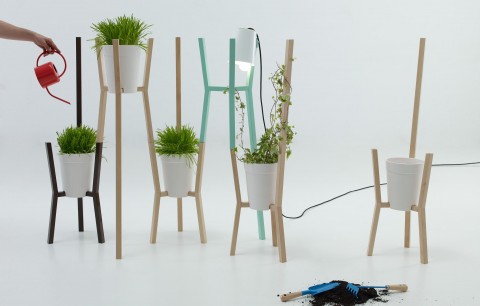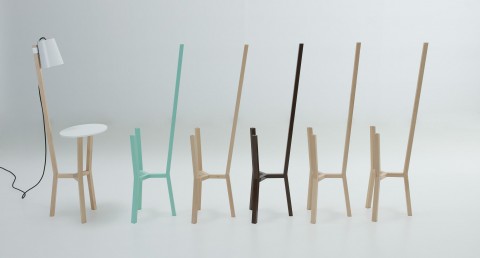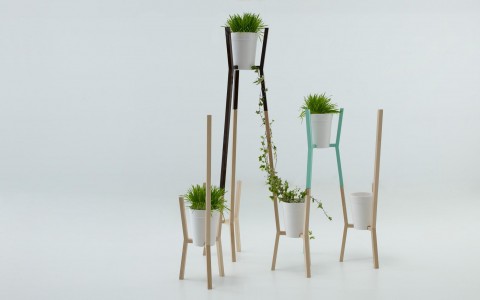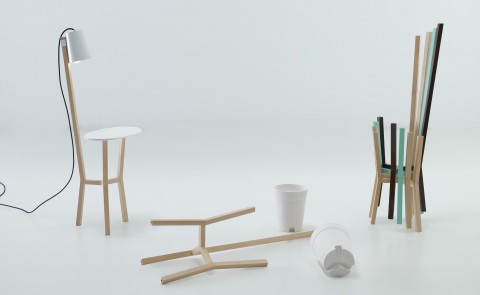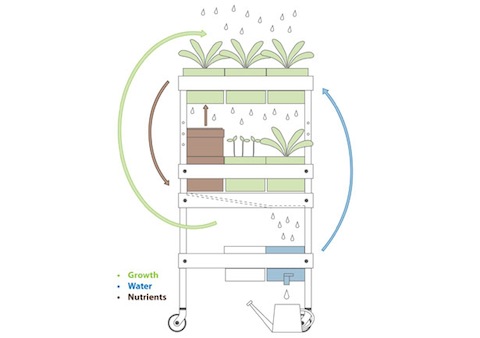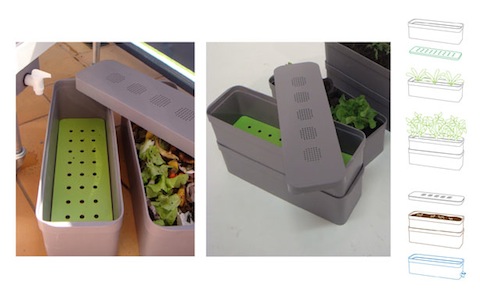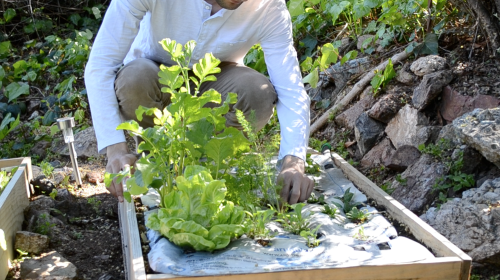
It’s almost time for balcony gardening, and this compact solution can be a perfect contender for a limited outdoor space. UrbMat is a small-space garden idea that takes the guesswork out of growing your own herbs, vegetables, and flowers. All you need is a small area of dirt or a raised bed 3X2 feet in size to get started. The seeds come in protective encasements, GrowUps, that already include all that is needed for a plant to flourish – a mix of chili powder, compost, worm castings, and clay. Simply lay UrbMat on top of the soil, press the GrowUps into the corresponding holes, and leave it to do its magic. I think, even I can do that.
Naturwall by Turkish design agency Designnobis is a clever way to reuse disposable plastic cups by turning them into planters. To illustrate their vision, designers collected about ten used plastic disposable coffee cups, washed them off, then created a simple flexible metal holder system to hang the cups, transforming them into a vertical garden. By adding these metal holders together you can create a garden of any size. Simple, pragmatic and graceful project! No wonder it has already scored a Green Dot Build Award.
(via Urban Gardens)
This modular and visually stunning mini garden by MUTdesign, called Roots, is inspired by traditional trellises. The system is based on spiky interlocking wooden structures that are reversible and can create different configurations. With Roots you can build a kitchen garden, vertical garden of any size, even a green room divider. Various sizes of ceramic flowerpots are available to accomodate different plants. The Roots garden is a concept design I cannot wait to see produced.
Even though the fire escape gardening season is over, some of us, urban folks, still want to cultivate some greenery and fresh food. And if we hope to grow our herbs and veggies in a small city apartment, we need good strategy and proper tools. Mobile Food Garden by Nancy Wang offers both. It is a system that incorporates planters, overflow trays, perforated bases and even a compost station.
The garden is designed as an ecological system based around three dominant cycles found in nature: growth, water and nutrient. Most plant growth occurs in the top two levels. Seeds may be germinated in the lower levels and rotated to the top trays to allow further growth. Rainwater feeds garden from the top, it then flows through the lower planting trays and collects in the bottom water tray. A perfect circle. This vertical structure of the garden gives it some space-saving points as well.
‘Apartment homes do not have the luxury of a backyard and there is limited opportunity to experience gardening, – says Nancy Wang. – This mobile food garden project aims to reconnect apartment dwellers with nature, through the design of a product/system that improves the urban living gardening experience, while communicating urban dwellers the potential benefits of a more self-sufficient way of living.’


